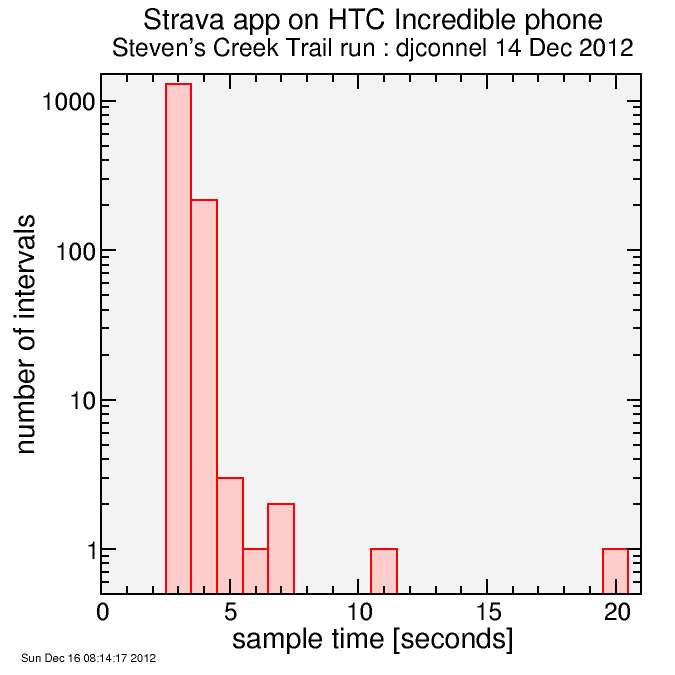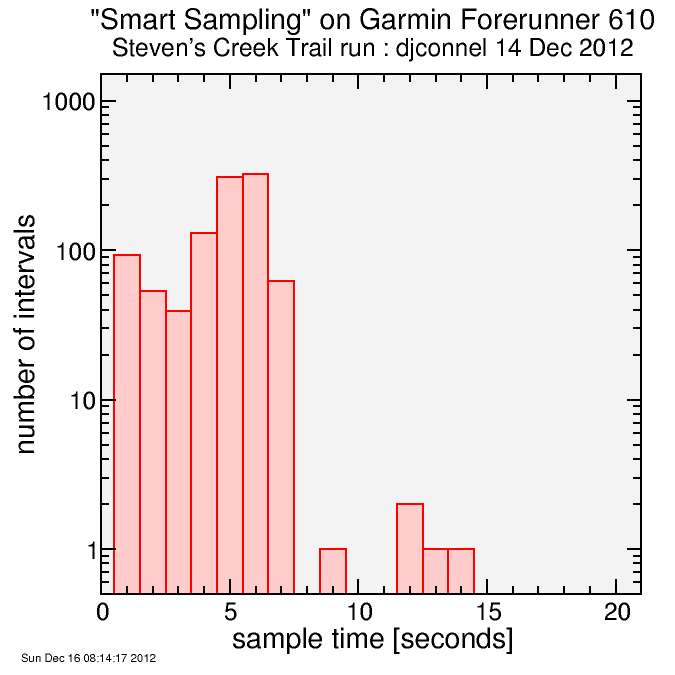Garmin Forerunner 610 "Smart Sampling" test
I recently did a run using both my new Garmin Forerunner 610 and the Strava Android app running on my HTC Incredible phone.
I hadn't yet gone through the set-up menus on the Garmin so settings were still mostly default. This included "smart sampling" which reduces file sizes by recording data only when the watch decides it is important to do so based on the goal of being able to accurately reproduce the course.
The Strava app takes a different approach to file size reduction: it attempts to sample at 3-second intervals unless data signal is lost or unless the runner is idle. It's thus less "smart".
I've shown for cycling that "smart sampling" can yield significant errors in Strava times for segments since Strava doesn't interpolate positions and is therefore limited to times equal to a difference between samples. So if a 6-second gap, for example, appears in data Strava will have two choices for time on a segment, separated by 6 seconds. Typically 6 seconds is a big deal on Strava times so forcing 1-second sampling is preferred. Running, however, is typically slower than cycling and maybe 1-second sampling is overkill.
As an aside, for Low-Key Hillclimbs I wrote my own GPS-based timing code which does interpolation for timing and I suspect that is much less prone to smart-sampling induced errors.
But to this example: I was curious on this run to what sort of sampling times I was getting from the Forerunner 610's smart sampling algorithm. Here's plots of histograms of the sampling times recorded by the Android and by the Forerunner:


Note the logarithmic axis. The result, however, is the Garmin most often uses 6-second samples but sometimes samples as quickly as every second. It also frequently slips to 7-second samples but only on a few occasions did the sample time get longer. The Android uses 3-second samples around 80% of the time, 4 second samples 20%, with a few isolated examples of longer sampling times, perhaps due to signal loss (under tunnels, for example).
Given these results, I will stick with the decision I made to reset my Garmin to 1-second sampling. If Strava used interpolation, it might be okay, but without it 6-to-7 second sampling times are simply too long.

Comments